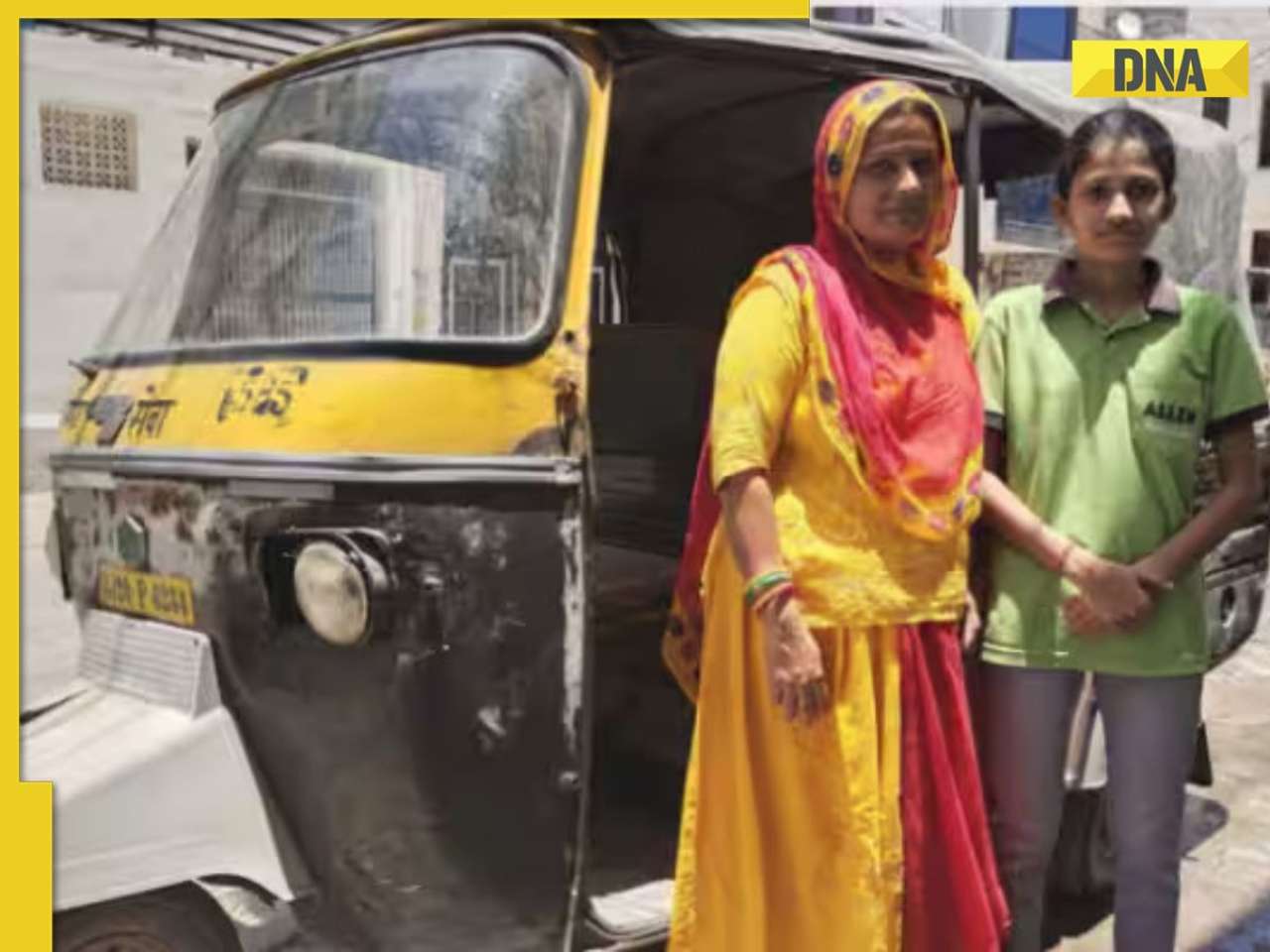It’s that sinking feeling for Giridharbhai Khedia, 49. The artisan has been jobless since the first week of January and has just Rs 9,500 left to support his family of six.
Decline in exports to the US force several handicraft ops to slash workforce
MUMBAI: It’s that sinking feeling for Giridharbhai Khedia, 49. The artisan has been jobless since the first week of January and has just Rs 9,500 left to support his family of six, which includes bed-ridden parents, wife and school-going children. The money is diminishing and so is his chance of getting a new job.
Khedia is among 84 other artisans laid off by Lalji Handicrafts of Jodhpur, which was faced with continuing decline in exports of handicraft items due to dollar depreciation. “These savings will last only for three to four months,” he says.
Similar is the plight of Devakiben Dua, 32, who is busy rolling papads in her two-room dwelling in the Kotwali area of Moradabad in Uttar Pradesh. Another victim of massive retrenchment in the handicrafts industry in the country, Dua lost her job as an artisan of brass items in mid-November; she has been self employed since then. She earns about Rs 35-40 per day, selling papads. She is just able to afford serving one square meal to her two children and her aged mother.
Like Khedia and Dua, thousands of other artisans have lost their jobs in the Rs 40, 000 crore handicraft industry in India, according to the information provided by the export promotion council for handicrafts (EPCH), Government of India.
With the attention of the country’s corporate czars focused on problems of attrition and retention in sectors like banking, financial services, information technology (IT) etc, a displeasing picture is slowly being sketched in the labour-intensive handicrafts industry, which currently employs 7 million in roughly 25,000 handicraft clusters across the country, says R K Srivastava, deputy director, EPCH. This largely unorganised sector exports items like metal ware, zari and lace goods, imitation jewelry, wooden artifacts, brass and iron goods, and is mostly concentrated in tier-II and tier-III towns of Uttar Pradesh, West Bengal, Rajasthan, and Haryana.
With the rupee having appreciated by 10.2% against the dollar over the past 12 months (according to data by US based financial services firm Morgan Stanley), exports in the sector have declined from $3 billion in 2006-07 to $2.5 billion in 2007-08, says Ganesh Kumar Gupta, president, federation of Indian export organization (FIEO).
Srivastava says over 2 million people working in the various handicrafts units across India will be rendered jobless by March this year and another 3 million by December 2008, if the rupee continues to appreciate further, as over 35% of the exports are to the US market.
“Each month, a unit employing some 500 employees is incurring losses of Rs 20 crore,” says Nirmal Bhandari, president, Jodhpur Handicraft Exporters Association. Furthermore, handicrafts exports from Rajasthan have declined by 40% in 2007-08 from about Rs 600 crore in the previous fiscal, according Richa Solanki, a senior executive at the Federation of Rajasthan Handicraft Exporters.
The situation in other places like Moradabad, Jaipur, Shahranpur, Ferozabad is equally deplorable. Of the 1400 units employing 10 lakh people in Moradabad, 40 have already closed down, leaving 28,000 people in the lurch. “Price of brass has increased from Rs 90 per kg to Rs 150 over the past 10 months. This, coupled with a 4% value added tax on products, is increasing costs on finished products and decreasing sales,” says Vinod Khanna, proprietor, Nodi Handicrafts, Moradabad.
Reduction in sales is another blow to the workers.
Gupta says after being rendered jobless, many artisans have managed to get jobs as handcart pullers, carpenters, saw men, waiters, tea vendors, etc. “Some in Shahranpur, Hoshiarpur, Bareilly have set up small pan-bidi shops to make a living.”
But the income they get through these means pales in comparison to the average Rs 3500 they would make each month by creating artifacts, furniture and jewelry items.
Khanna says workers who are 50-plus will find it tougher to earn money. “The younger ones get part-time jobs as rickshaw pullers, porters, food delivery boys, etc. But the older workers have far lesser choice.”
Well, now they know how nightmares replace dreams, and how fast.
g_priyanka@dnaindia.net
![submenu-img]() Anant Raj Ventures into tier 2 and tier 3 cities, pioneering growth in India’s real estate sector
Anant Raj Ventures into tier 2 and tier 3 cities, pioneering growth in India’s real estate sector![submenu-img]() Sophie Turner reveals she wanted to terminate her first pregnancy with Joe Jonas: 'Didn't know if I wanted...'
Sophie Turner reveals she wanted to terminate her first pregnancy with Joe Jonas: 'Didn't know if I wanted...'![submenu-img]() Meet outsider who was given no money for first film, battled depression, now charges Rs 20 crore per film
Meet outsider who was given no money for first film, battled depression, now charges Rs 20 crore per film![submenu-img]() This is owner of most land in India, owns land in every state, total value is Rs...
This is owner of most land in India, owns land in every state, total value is Rs...![submenu-img]() Meet man who built Rs 39832 crore company after quitting high-paying job, his net worth is..
Meet man who built Rs 39832 crore company after quitting high-paying job, his net worth is..![submenu-img]() Meet woman who first worked at TCS, then left SBI job, cracked UPSC exam with AIR...
Meet woman who first worked at TCS, then left SBI job, cracked UPSC exam with AIR...![submenu-img]() Meet engineer, IIT grad who left lucrative job to crack UPSC in 1st attempt, became IAS, married to an IAS, got AIR...
Meet engineer, IIT grad who left lucrative job to crack UPSC in 1st attempt, became IAS, married to an IAS, got AIR...![submenu-img]() Meet Indian woman who after completing engineering directly got job at Amazon, then Google, Microsoft by using just...
Meet Indian woman who after completing engineering directly got job at Amazon, then Google, Microsoft by using just...![submenu-img]() Meet man who is 47, aspires to crack UPSC, has taken 73 Prelims, 43 Mains, Vikas Divyakirti is his...
Meet man who is 47, aspires to crack UPSC, has taken 73 Prelims, 43 Mains, Vikas Divyakirti is his...![submenu-img]() IIT graduate gets job with Rs 100 crore salary package, fired within a year, he is now working as…
IIT graduate gets job with Rs 100 crore salary package, fired within a year, he is now working as…![submenu-img]() DNA Verified: Is CAA an anti-Muslim law? Centre terms news report as 'misleading'
DNA Verified: Is CAA an anti-Muslim law? Centre terms news report as 'misleading'![submenu-img]() DNA Verified: Lok Sabha Elections 2024 to be held on April 19? Know truth behind viral message
DNA Verified: Lok Sabha Elections 2024 to be held on April 19? Know truth behind viral message![submenu-img]() DNA Verified: Modi govt giving students free laptops under 'One Student One Laptop' scheme? Know truth here
DNA Verified: Modi govt giving students free laptops under 'One Student One Laptop' scheme? Know truth here![submenu-img]() DNA Verified: Shah Rukh Khan denies reports of his role in release of India's naval officers from Qatar
DNA Verified: Shah Rukh Khan denies reports of his role in release of India's naval officers from Qatar![submenu-img]() DNA Verified: Is govt providing Rs 1.6 lakh benefit to girls under PM Ladli Laxmi Yojana? Know truth
DNA Verified: Is govt providing Rs 1.6 lakh benefit to girls under PM Ladli Laxmi Yojana? Know truth![submenu-img]() In pics: Taarak Mehta Ka Ooltah Chashmah actress Deepti Sadhwani dazzles in orange at Cannes debut, sets new record
In pics: Taarak Mehta Ka Ooltah Chashmah actress Deepti Sadhwani dazzles in orange at Cannes debut, sets new record![submenu-img]() Ananya Panday stuns in unseen bikini pictures in first post amid breakup reports, fans call it 'Aditya Roy Kapur's loss'
Ananya Panday stuns in unseen bikini pictures in first post amid breakup reports, fans call it 'Aditya Roy Kapur's loss'![submenu-img]() Remember Harsh Lunia? Just Mohabbat child star, here's how former actor looks now, his wife is Bollywood's popular...
Remember Harsh Lunia? Just Mohabbat child star, here's how former actor looks now, his wife is Bollywood's popular...![submenu-img]() Mother's Day 2024: Bollywood supermoms who balance motherhood, acting, and run multi-crore businesses
Mother's Day 2024: Bollywood supermoms who balance motherhood, acting, and run multi-crore businesses![submenu-img]() Rocky Aur Rani's Golu aka Anjali Anand shocks fans with drastic weight loss without gym, says fitness secret is...
Rocky Aur Rani's Golu aka Anjali Anand shocks fans with drastic weight loss without gym, says fitness secret is...![submenu-img]() Haryana Political Crisis: Will 3 independent MLAs support withdrawal impact the present Nayab Saini led-BJP government?
Haryana Political Crisis: Will 3 independent MLAs support withdrawal impact the present Nayab Saini led-BJP government?![submenu-img]() DNA Explainer: Why Harvey Weinstein's rape conviction was overturned, will beleaguered Hollywood mogul get out of jail?
DNA Explainer: Why Harvey Weinstein's rape conviction was overturned, will beleaguered Hollywood mogul get out of jail?![submenu-img]() What is inheritance tax?
What is inheritance tax?![submenu-img]() DNA Explainer: What is cloud seeding which is blamed for wreaking havoc in Dubai?
DNA Explainer: What is cloud seeding which is blamed for wreaking havoc in Dubai?![submenu-img]() DNA Explainer: What is Israel's Arrow-3 defence system used to intercept Iran's missile attack?
DNA Explainer: What is Israel's Arrow-3 defence system used to intercept Iran's missile attack?![submenu-img]() Sophie Turner reveals she wanted to terminate her first pregnancy with Joe Jonas: 'Didn't know if I wanted...'
Sophie Turner reveals she wanted to terminate her first pregnancy with Joe Jonas: 'Didn't know if I wanted...'![submenu-img]() Meet outsider who was given no money for first film, battled depression, now charges Rs 20 crore per film
Meet outsider who was given no money for first film, battled depression, now charges Rs 20 crore per film![submenu-img]() Meet actress who quit high-paying job for films, director replaced her with star kid, had no money, now lives in...
Meet actress who quit high-paying job for films, director replaced her with star kid, had no money, now lives in...![submenu-img]() This star kid's last 3 films lost Rs 5000000000 at box office, has no solo hit in 5 years, now has lost four films to...
This star kid's last 3 films lost Rs 5000000000 at box office, has no solo hit in 5 years, now has lost four films to...![submenu-img]() Meet actress viral for just walking on screen, belongs to royal family, has no solo hit in 15 years, but still is…
Meet actress viral for just walking on screen, belongs to royal family, has no solo hit in 15 years, but still is…![submenu-img]() This is owner of most land in India, owns land in every state, total value is Rs...
This is owner of most land in India, owns land in every state, total value is Rs...![submenu-img]() Blinkit now gives free dhaniya with veggie orders, thanks to Mumbai mom
Blinkit now gives free dhaniya with veggie orders, thanks to Mumbai mom![submenu-img]() Meet man, an Indian who entered NASA's Hall of Fame by hacking, earlier worked on Apple's...
Meet man, an Indian who entered NASA's Hall of Fame by hacking, earlier worked on Apple's...![submenu-img]() 14 majestic lions cross highway in Gujarat's Amreli, video goes viral
14 majestic lions cross highway in Gujarat's Amreli, video goes viral![submenu-img]() Here's why Isha Ambani was not present during Met Gala 2024 red carpet
Here's why Isha Ambani was not present during Met Gala 2024 red carpet























































)
)
)
)
)
)